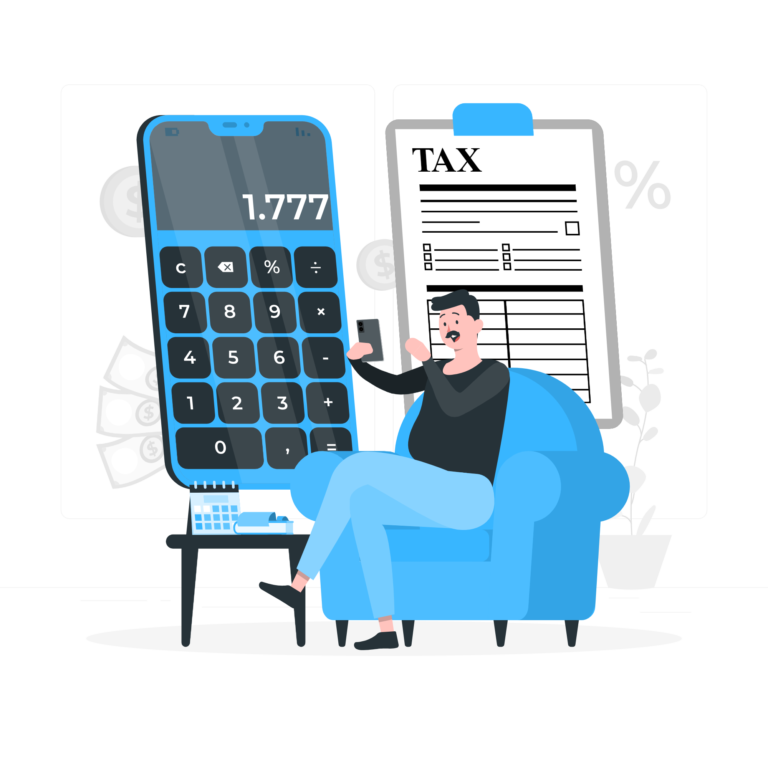Annual VAT reconciliation: What is it?
La concordance TVA en Suisse est une obligation légale pour les assujettis à la TVA. Elle consiste à vérifier l’exactitude des décomptes TVA périodiques déclarés par l’assujetti.
The aim is to ensure that the VAT statements submitted are correct and to avoid any penalties. If any errors are found when the reconciliation is drawn up, they must be declared exclusively on the "Annual reconciliation (corrective statement in accordance with art. 72 LTVA)" form. The statements submitted for the previous tax period are then completed and corrected.
How to do a VAT reconciliation: step-by-step
1. Finalise your accounts
Before you think about drawing up a rectifying statement and submitting it for VAT. It is important that your accounts are finalised. In this first stage, you will need to ensure that all payments and receipts have been reconciled, and that all outstanding invoices for purchases and sales have been accounted for.
The importance of the transitional periods is all the greater if you are invoicing using the "agreed" method. Under this method, the taxable person can reclaim the VAT on these purchases as soon as he receives the invoice and must pay the VAT when a sales invoice is issued.
Attention should also be paid to private shares, acquisition tax.
2. Compare
Once your accounting is complete, you will need to compare the quarterly or half-yearly statements you have declared throughout the year with what you have in your accounts after any adjustments.
To do this exercise correctly, simply reproduce the VAT statements on the basis of the "finished" accounts.
You can then prepare an Excel document and enter the amounts entered in the declared statements and compare them with the amounts obtained.
In the event of a VAT audit, the auditor may ask to see the reconciliation document.
The differences obtained must be declared.
3. Complete the rectifying statement
Once this comparison has been made between what has been declared and what has actually been achieved. You can fill in the form provided by the federal authorities.
Please note that the form will not be the same depending on the method you use to deduct VAT.
VAT concordance form "effective" method: Form 550
VAT concordance form "net tax liability rate" or "flat rate" method: Form 553
4. Deadline for submission of the rectifying statement (5th statement)
The taxpayer has until the 180th day to send the rectifying statement to the Federal Tax Administration.
After this deadline, the tax authorities assume that the VAT statements submitted by the taxable person are complete and correct and that the tax period has ended.
Consequences of an inaccurate declaration
Penalties and default interest
Inaccurate VAT returns and errors in tax collection are initially corrected, which involves the additional payment of tax that has not been collected.
This happens when, for example, the recipient of the invoice is abroad but the service is provided on Swiss territory. Some may be tempted to declare this sale as an "export of services", using the principle of the place of destination to avoid charging VAT. But this reasoning is wrong.
The reconciliation is a means of avoiding the continuity of errors over time, forgetting or failing to implement a VAT reconciliation check can have significant financial consequences. Indeed, non-compliance with the annual VAT reconciliation as well as repeated errors over many years can be punishable by a fine.
If a reconciliation is made and results in an additional payment to the Federal Administration, interest on arrears will be due. Interest starts to accrue at the beginning of the following year. Again, if no reconciliation has been made the interest will be calculated from the year in which the error was made.
Conclusion
VAT may seem straightforward, but certain situations or economic transactions can sometimes go beyond our knowledge and require the intervention of a specialist.
Reconciliation is one of the many tax obligations that entrepreneurs must fulfil.
Our team of accountants and tax specialists are on hand to provide proactive advice to help you avoid any penalties.
FAQ - VAT reconciliation
VAT reconciliation in Switzerland is a legal obligation that requires taxpayers to check the accuracy of items declared throughout the year in their statements, once the year has ended.
The reconciliation work must include all turnover, whether taxable or not, income without VAT implications and input tax. They must justify the VAT treatment and the correct declaration of items for the entire tax year.
The rectifying statement, sometimes referred to as the "5th statement", which contains only the differences noted during the year, must be filed within 180 days following the end of the accounting year.
The Federal Tax Administration assumes that the reconciliation work has been carried out without revealing any discrepancies and that the tax period has been audited and finalised. However, in the event of an audit, the absence of proof of this work may be considered a breach.
It is essential to take stock of the points of attention relating to the company's activity, identify potential VAT risks, document them and put in place internal processes to minimise the risks. A detailed, personalised analysis is needed to ensure compliance.





